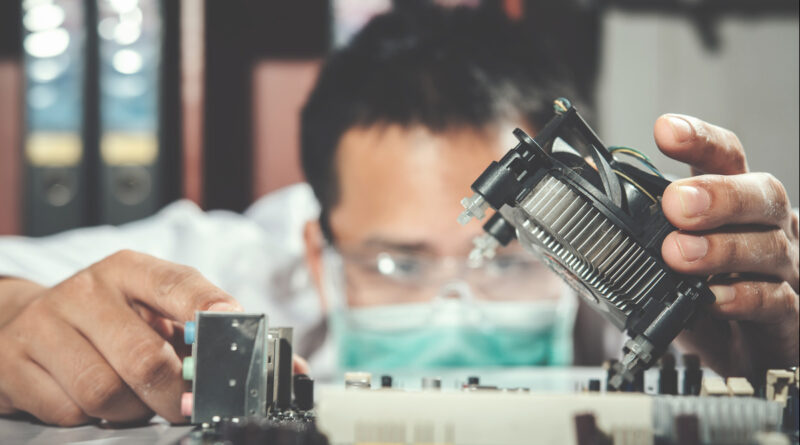A Comprehensive Guide on Micro-Soldering Repair
As phones become increasingly advanced, micro-soldering has become an essential skill in smartphone repair. Knowing micro-soldering can make your repairs professional if you need to replace parts or fix tiny circuits. This guide will teach you the techniques, tools, and safety tips needed for micro soldering repair.
The type of soldering iron you use matters a lot in smartphone repair. Soldering stations offer precise control. Cordless irons are portable but may lack consistency, and hot air rework stations are versatile for soldering and desoldering.
Best practices for micro-soldering include flux application, tip selection, component handling, cleaning, inspection, and testing. You must protect your eyes while performing micro-soldering and ensure enough ventilation. It is also recommended to wear heat-resistant gloves and ensure proper storage, fire safety, and electrical safety.
Basic Tools For Micro-Soldering Repair
When you micro-solder, the kind of soldering iron you use greatly affects how well you fix things. There are different types of soldering irons, each with good and bad points.
Soldering Stations:
These are fancier and let you control the temperature. That’s important for micro soldering, where you need the heat just right. Pros like these because they’re precise.
Cordless Irons:
These run on batteries, so you can carry them around. But they might not keep the heat steady for harder jobs. They’re good for quick fixes on the move.
Hot Air Rework Stations:
These do both soldering and unsoldering. They’re handy for fixing circuit boards with tiny parts stuck on them. People often use them with regular soldering irons for different jobs.
Best Micro-Soldering Repair Techniques
It’s super important to follow the best ways to make sure your fixes last. Here’s what you need to think about:
Using Flux
Putting just the right amount of flux is key for clean soldering. Too little makes a weak joint, and too much makes a messy cleanup. Using a flux pen or syringe helps get it just right.
Choosing Tips
The size and shape of your soldering tip matter when making precise joints. A small, pointy tip works best for micro-soldering repair, but you might need different tips for different parts.
Handling Components
Be careful with the parts to avoid damage. Use tools and mats that prevent static electricity. Some parts need extra protection from heat during soldering.
Cleaning Up
After soldering, clean up the area to keep it working well. Isopropyl alcohol is good for this. It removes leftover flux and solder bits.
Checking
Look closely at your work to make sure it’s all good. Use a magnifying glass or microscope to check for any problems like weak joints.
Testing
Once you’re done soldering and cleaning, test the device to ensure it’s fixed. Don’t just turn it on; make sure all the parts work as they should.
Safety Precautions For Micro-Soldering Repair
Safety is very important when doing micro-soldering. Here are some things to keep you safe:
- Always wear safety goggles to protect your eyes from solder and fumes. Some goggles have special coatings to help you see better and last longer.
- Make sure your workspace has good airflow to get rid of harmful fumes. You can use a special fan to suck away the fumes.
- Wear gloves that can handle heat. They’ll protect your hands from burns and help you hold your tools better.
- Always store your soldering iron and tools in a safe spot. This prevents accidents.
- Have a fire extinguisher close by, especially when things get really hot.
- Make sure all the wires are connected well. To prevent shocks, always use a plug that’s properly grounded.
Conclusion
In conclusion, when you’re performing a micro-soldering repair to fix smartphones, the type of soldering iron you choose is really important. There are different kinds, like soldering stations and cordless irons. Each has its positive and negative points. It is important to use the best techniques for soldering, like using the right amount of flux, always wearing goggles, keeping your workspace ventilated, and using heat-resistant gloves.
If you are not confident enough to perform the job yourself, you can always seek professional help from reputed service providers to ensure you get quality repair service.
Frequently Asked Questions
How to fix bad soldering ?
To fix bad soldering, first remove the old solder using a desoldering pump or braid. Clean the area, then reheat the connection and apply new solder to create a strong bond.
What are the 4 reasons why soldering joints fail ?
Soldering joints usually fail due to poor heating, dirty surfaces, moving the parts before the solder cools, or using too much or too little solder.




